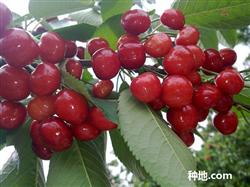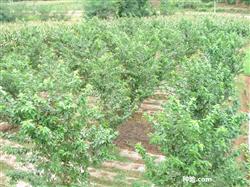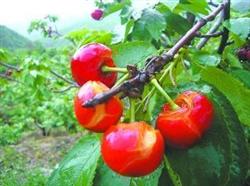What should we pay attention to during the picking period of big cherries?

What should we pay attention to during the picking period of big cherries? Cherry picking period should be paid attention to: first, the maturity period of cherry varieties used for cultivation is very inconsistent, even if the fruit of the same inflorescence, there is a difference between sooner or later. Cherries are fresh 40 days after flowering. From May to June, cherries will be ripe for the market. The fruit harvest period is an important part of the annual growth and development cycle. The harvest time of sweet cherry fruit should be determined according to its maturity, and its maturity should be determined according to the comprehensive factors such as coloring, fruit size, pulp firmness, flavor quality and so on. The fruit is fully expanded and the pulp is elastic but not soft. and has shown the unique flavor quality of this variety is suitable for harvest. Second, the harvest method should be harvested in batches and by stages. The harvest time is determined comprehensively according to fruit maturity, use and market demand. Varieties with inconsistent maturity should be harvested by stages, and those that cannot be dealt with immediately after harvest should be kept fresh at low temperature to achieve high yield and harvest. Moreover, on a cherry tree, the ripening period is not exactly the same because the flowering time is different from the position of the fruit. Generally early blooming flowers and upper and outer fruits of the crown mature earlier than those of late flowering and inner canopy, so they should be harvested in batches according to the ripening of the fruit. Variety should be considered in harvesting. Because the soft meat varieties of sweet cherries mature and soften faster, so the harvest time is shorter and concentrated; the hard meat varieties are resistant to storage and transportation, and the harvest time and treatment time can be slightly longer. The harvest time of the same variety is often advanced or postponed in different years due to the influence of climate. When the weather is dry, the maturity period is advanced and the harvest period is shortened; when the weather is slightly cooler and humid, the maturity period is delayed and the harvest period is prolonged. Harvest depends on the use of the fruit. Cherries sold nearby should generally be harvested when they are fully ripe and show the characteristics of this variety; cherries sold fresh or processed for export should be harvested at maturity 8; 5-7 days earlier than fresh food; if used for wine making, they should be harvested when they are fully ripe. Third, recommend ploughing in soil, fertilizer and water management. After rainfall or watering, the soil should be ploughed and loosened in time to keep the soil loose and free of weeds. The depth of ploughing is 5ml / 10cm to adjust the temperature and preserve soil moisture. It is recommended that nitrogen fixing plants such as clover and alfalfa should be planted in the garden to increase soil organic matter. Topdressing measures soil topdressing was carried out 20 days before the late fruit growth period and harvest time. It is suitable to apply pure nitrogen 1Kg, pure phosphorus 05Kg and pure potassium 1Kg per l00Kg big cherry. The method of fertilization is to open a ditch under the canopy with a depth of 15ml / 20cm. Water immediately after topdressing. Foliar topdressing, mainly phosphorus and potassium fertilizer, can supplement the trace elements needed for the growth and development of cherry. The application concentrations are: urea 0.3%-0.5%, potassium dihydrogen phosphate 0.2%-0.3%, borax 0.1 Mel 0.3%. Water management big cherry is not resistant to waterlogging. Stagnant water in the garden must be removed immediately after rain, and water-saving irrigation measures such as drip irrigation and sprinkler irrigation should be advocated to minimize the use of water-saving irrigation methods. Fourth, during the harvest period, the main method of shaping is to pull the branches and open the angle, and timely remove the sprouting branches in the crown, upright branches, dense branches and cutting mouth, etc., in order to increase the ventilation of the crown. Fifth, the principle of pest control is based on agricultural and physical control, with biological control as the core. In accordance with the law of the occurrence of diseases and insect pests, give priority to prevention, scientific use of chemical control, effective control of diseases and insect pests, so as to achieve ecological balance. Agricultural prevention and control. Measures should be taken to cut off the branches of diseases and insect pests, remove dead branches and leaves, scrape off the warped and cracked bark of the trunk, turn over the tree plate, cover the ground with straw, and apply fertilizer scientifically to restrain the occurrence of diseases and insect pests. Physical control. According to the biological characteristics of diseases and pests, some methods were adopted, such as artificial assassination to eliminate shellfish pests, tree trunks wrapped with grass rope to eliminate caterpillar pests, black light to trap moth adults and so on. Chemical control. If there is a trend of high density of diseases and insect pests, and it is difficult to achieve the purpose of agricultural and physical control, low toxic pesticides can be used for control. Click to get more cherry planting techniques click to get more fruit planting techniques
- Prev

How do you water big cherries?
How do you water big cherries? Ask for advice Big Cherry can be watered in the following ways: first, water before flowering. Pre-flowering water is poured from germination to flowering, mainly to meet the water demand of big cherry leaf expansion and flowering. During this period, the temperature is relatively low, the amount of irrigation should be less, with the degree of "water passing through the dry land", so as to avoid.
- Next

How do big cherries crack fruit?
Cherry is easy to crack on rainy days. What methods can prevent cherry cracking? Cherry fruit cracking in rain before harvest or near ripeness is a common problem in cherry producing areas in China, which brings huge losses to fruit growers every year. By spraying minerals, hormones and other protective agents and other methods to crack fruit, its effect...
Related
- Moge, come on! The staff of the peasant association in the producing area of cantaloupe were frightened when the crowd gathered.
- Causes and Solutions of low Fruit setting rate of Apple
- Symptoms and control measures of passion fruit virus disease
- Fruit growing lesson: how do apple orchards keep high yields?
- Can you build orchards in the mountains? What are the pros and cons?
- How to manage the coloring period of Crisson grape?
- This paper introduces the processing technology of two kinds of fig products.
- How much is a month for retired teachers in rural areas by 2020?
- How can strawberry planting increase sugar content? We should pay attention to management in many aspects.
- What are the cultivation techniques on how to improve the yield of golden fruit?

